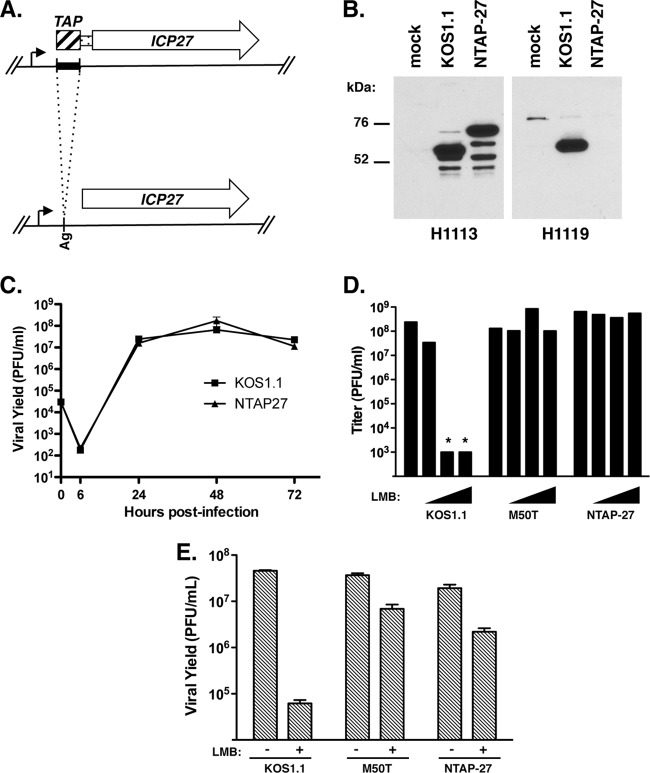Fig 5.
NTAP-27 is LMB resistant. (A) Generation of NTAP-27. To engineer the NTAP-27 ICP27 gene, an ∼300-bp DNA sequence (black bar) encoding tandem calmodulin- and streptavidin-binding domains was cloned at an AgeI site (Ag) in the 5′ UTR of the ICP27 gene. Translation of the modified gene leads to expression of an ICP27 molecule having a 100-residue N-terminal extension composed of a 70-residue TAP tag (crosshatched bar) followed by 30 residues derived from the 5′ UTR (narrow bar). The mutated gene was engineered into a recombinant virus, NTAP-27. (B) Immunoblot analysis. Vero cells were infected as shown, and proteins harvested at 6 hpi were analyzed by immunoblotting using ICP27 monoclonal antibody H1113 or H1119. (C) Growth of NTAP-27 in Vero cells. Vero cells were infected at an MOI of 0.01, and cultures were harvested at various time points. Viral yields were determined by plaque assay of the infected cell lysates on Vero cells. Each point represents the mean of triplicate infections; error bars denote the SEMs. (D and E) Viral plaque assays. (D) Titers of viral stocks were determined in the absence of LMB (leftmost bar in each set of bars) or in the presence of 3, 5, and 10 ng/ml LMB (triangles). The limit of detection was 1 × 103 PFU/ml; asterisks indicate that the titer was below this value. (E) Viral growth analysis. Vero cells were infected at an MOI of 0.01 PFU per cell in the absence or presence of 30 ng/ml LMB, and cultures were incubated for 2 days. Viral yields were determined by plaque assay of the infected cell lysates on Vero cells.

